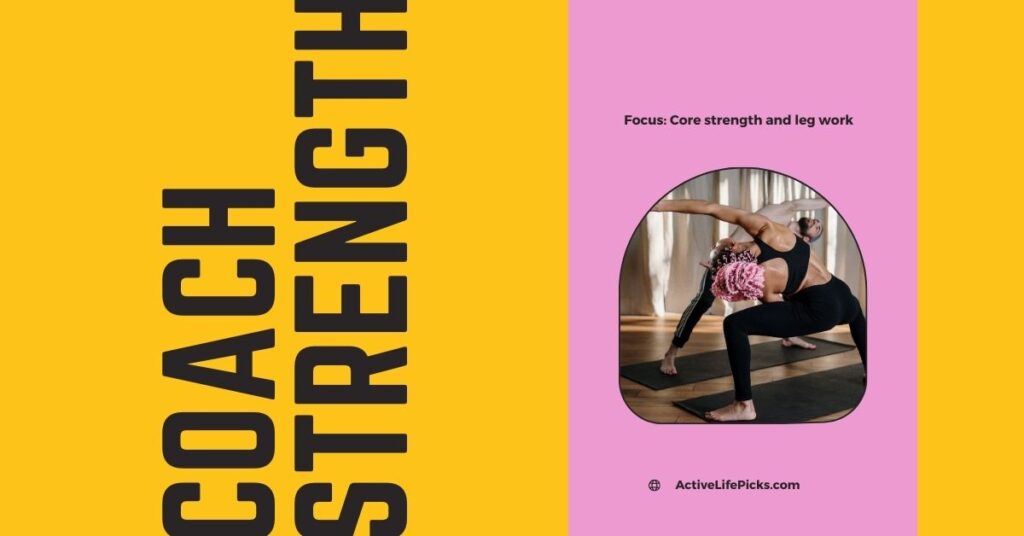Written by ActiveLifePicks.com
When it comes to cardiovascular exercise, two popular methods dominate the fitness scene: High-Intensity Interval Training (HIIT) and Steady-State Cardio (SSC). Both have their own unique benefits, but which one is the best choice for you?
Whether you’re aiming to burn fat, build endurance, or improve your overall fitness, it’s important to understand the differences between HIIT and steady-state cardio. Each method has its place in a well-rounded fitness routine, and the key is knowing when and how to use them for maximum results.
Let’s break down these two forms of cardio, compare their benefits, and help you determine which one aligns best with your fitness goals.
What is HIIT?
HIIT (High-Intensity Interval Training) is a form of cardiovascular exercise where you alternate between short bursts of intense activity followed by a brief rest or low-intensity recovery period. These intense bursts push you to your maximum effort, while the recovery periods give you a chance to catch your breath before jumping back in.
Example of HIIT:
- 30 seconds of sprinting
- 30 seconds of walking or light jogging
- Repeat for 15–30 minutes
HIIT can involve various exercises, such as running, cycling, bodyweight exercises (e.g., burpees, jump squats), or weightlifting.
What is Steady-State Cardio (SSC)?
Steady-State Cardio refers to moderate-intensity exercise performed at a consistent pace for an extended period of time, typically 20–60 minutes. During steady-state cardio, you maintain a constant level of effort, which allows you to sustain the activity for longer periods.
Example of SSC:
- A 45-minute jog at a steady pace
- A 30-minute bike ride at moderate intensity
- A long walk at a steady pace
Benefits of HIIT
- Burns More Calories in Less Time
One of the biggest advantages of HIIT is that it allows you to burn a significant amount of calories in a short amount of time. The intense bursts of effort boost your metabolism, causing you to burn more calories even after your workout (known as the afterburn effect or EPOC – Excess Post-Exercise Oxygen Consumption). - Improves Cardiovascular Fitness Quickly
HIIT has been shown to improve both aerobic and anaerobic fitness, meaning it enhances the efficiency of both your cardiovascular system and your ability to perform high-intensity activities. As a result, HIIT is great for increasing endurance, stamina, and heart health. - Time-Efficient
HIIT workouts are typically shorter than steady-state cardio workouts, making them ideal for those with tight schedules. A 20-30 minute HIIT session can be just as effective (if not more) than longer periods of steady-state cardio. - Fat Loss
HIIT is known for being one of the most effective ways to burn fat. Due to the intensity of the workouts, it burns more fat compared to steady-state cardio in a shorter time. The high-intensity intervals also help preserve lean muscle mass.
Benefits of Steady-State Cardio (SSC)
- Sustained Fat Burning
Steady-state cardio is effective for fat burning, particularly when performed at a moderate intensity for a longer period of time. It relies on the body’s ability to utilize fat as its primary fuel source during prolonged exercise. - Lower Impact on Joints
For individuals who are new to exercise, have joint problems, or are recovering from an injury, steady-state cardio tends to be gentler on the body compared to the high-impact nature of HIIT. Activities like walking, cycling, and swimming are great examples of steady-state cardio that minimize joint stress. - Improved Mental Clarity
Steady-state cardio can provide a meditative effect, helping you reduce stress and clear your mind. Because the pace is steady, it allows you to stay in a rhythm, often providing a mental break from everyday pressures. Plus, it’s easier to carry on a conversation during steady-state workouts! - Builds Endurance
Because of its longer duration, steady-state cardio is ideal for building aerobic endurance. If your goal is to increase stamina for longer races (e.g., 5K, 10K, or half-marathons), steady-state cardio is essential for preparing your body to sustain longer efforts.
Which is Better: HIIT or Steady-State Cardio?
There’s no one-size-fits-all answer to this question—it really depends on your personal fitness goals, fitness level, and preferences. Both methods offer distinct benefits, and the best approach may be to incorporate a combination of both into your fitness routine.
When to Choose HIIT:
- If you’re short on time and want to maximize calorie burn.
- If your goal is to burn fat quickly while maintaining or building lean muscle.
- If you want to boost your cardiovascular fitness and challenge yourself.
- If you enjoy high-intensity workouts that push you to the limit.
When to Choose Steady-State Cardio:
- If you’re aiming for longer endurance and building stamina.
- If you prefer lower-impact exercise or have joint concerns.
- If you want to engage in a workout that allows for mental relaxation and a steady pace.
- If you’re training for a race, long-distance event, or want to build aerobic capacity over time.
The Takeaway: Find the Right Balance
In the end, both HIIT and steady-state cardio offer incredible benefits for your overall health and fitness. The key is finding a balance that aligns with your fitness goals, lifestyle, and personal preferences.
If you’re looking to get the most out of your workouts, try combining both methods. For example, you could do HIIT 2-3 times per week for fat loss and endurance, and include steady-state cardio on your active recovery days to improve stamina and mental clarity.
No matter which method you choose, remember that consistency, progression, and recovery are all crucial elements for achieving lasting results.
Need gear or tools to support your cardio workouts? Check out our selection of fitness trackers, activewear, and recovery products at ActiveLifePicks.com.
Which cardio method do you prefer?
We’d love to hear your thoughts! Share your experiences with us in the comments or tag us on social media.
